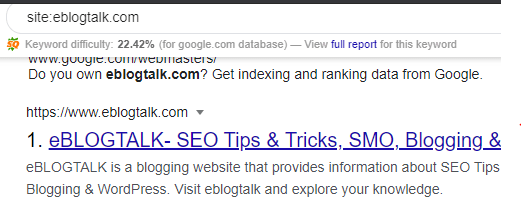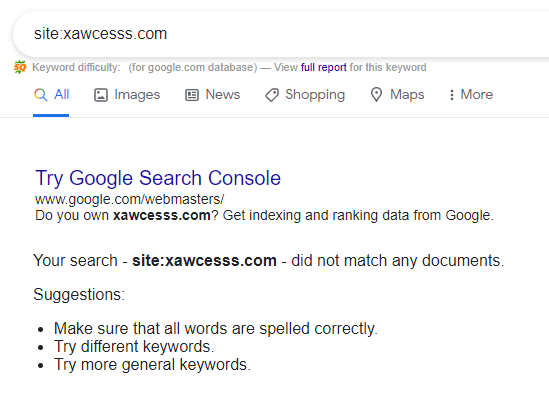Your website development is completed as well as you launched your website on a new domain. But your website is not showing up on the search engine results pages. Until the search engines like Google know that your website exists.
Do you know, why Google don’t know about your website existence ?
Let’s have a quick view “how search engine works” guide.
Google collects all the information about the webpages in the search index. And the search index is like a library where all the information are available. If your website isn’t in Google library, then users can’t able to find your website in the search engine result pages. Your website should be crawled by Google crawler and include your webpages in its index.
In this article, you will know how to submit your site to Google search engine.
Do you need to manually add a new URL or website to Google ?
Submitting a website isn’t required for your website to appear in the Google library or index. But, if you submit the website then it is the fastest way to appear in the Google’s index.
Google only need to know that you website exists then it crawl and index the webpages. If your website is linked to somewhere else on the web, Google will find and index your site.
But you can speed up the indexing by manually submitting a new site.
How long Will it take to index my website or URL?
There is no time limit that it takes for Google to index your website or URL. Without submitting a new URL to Google through the sitemap takes a long time to crawl the page. However, when submitting an updated sitemap to Google Search Console, it takes much less time.
Google can find your content on its own but it may take long time to index. However, it takes just a few minutes when you manually inform Google.
How to Submit a URL to Google
If you are launching a brand new website for the first time, you will undoubtedly be wondering how you can get it included in Google’s index as quickly as possible. Let’s look at your options. You can check this by using URL Inspection Tool.
Now, let’s have a look:
How to Check if a URL or Website is Indexed
You can check whether the website is indexed or not by using the “site:” search operator.
Run a search for: site:[Your Domain]
e.g. site:yourdomain.com
If your website is indexed, you can check it by using the search operator.
As an example:

Notice both the number of returned results as well as the indexed URLs displayed? In the event that there are no URLs indexed for the domain, you will see:
 When you have to submit a Website
When you have to submit a Website
Most commonly, you only need to submit your website to Google when you launch a site for the first time (because Google is not aware that it exists) or when you move your website to a new domain.
If you are working on an existing site, you shouldn’t need to submit the whole site if it is already been indexed.
There are, however, instances when you may need to do so as the result of an error; let’s say a developer accidentally added a rel=”noindex” tag across the site and you saw the site drop from the index.
How to Submit a Website to Google
The most effective way to submit the website to Google is to add an XML sitemap to Google Search Console.
You can do so by clicking the Sitemaps tab of Search Console.
You will now see the ‘Add a new sitemap’ box. Go ahead and enter the extension of your site’s XML sitemap.

Once you have done, you will see a list of submitted XML sitemaps, Status, and Discovered URLs:

How to Avoid Getting De-Indexed
We have done how to get your website indexed by Google search engine. But it is important to quickly identify the reasons why your website is de-indexed (means you were in the search engine but now you are not).
The deindex issue is rare. But when this happen, the reason is one of the below:
Blocked With ‘NoIndex’
The most common and accidental reason of d-index is that developer left the ‘noindex’ directive while updating the code.
It is either in the form of a noindex meta tag or by returning a ‘noindex’ header in the HTTP request. Learn more about this click here. You can remove this noindex directive, and resubmit the website.
Manual Action
Manual penalty, sometimes you find that your website has been deindex because a member of the webspam team deindex the website from the search results of its violating Google’s webmaster guidelines.
Learn more about it click here.
To avoid this penalty, don’t violate the webmaster guidelines.
Glossary of Terms
- Google Search Console: This is Google free tool that allows to manage the site’s performance on the search engine. Earlier, it is known as Google Webmaster Tools.
- De-Indexed: When a site that has previously been index in the search engine is removed; either accidentally or by manual action.
- Google’s Index: The web pages that are available in the library of Google.
- Inbound Links: Links from other websites to your own website.
- Internal Linking: Links between two pages on the same website.
- Noindex: A directive that is added to request the search engines that a site or web page is de-indexed.
- Site: Search Operator: It is a way to know the list of URLs that are available on the Google for particular domain.
- URL Inspection Tool: A tool under the Google Search Console that help the inspect index status of a URL.
- XML Sitemap: An XML sitemap that is submitted to a search engine informs the important pages that should be indexed first.
Submitting your website or webpages to Google doesn’t take long time. You only need to follow a few simple steps you’ll see your URLs indexed in no time at all.
More Resources:
> Cannibalization: How to Identify & Fix Keyword Cannibalization to Boost SEO
> What is breadcrumb navigation for SEO?
> Mobile SEO Mistakes
> How do we improve page speed- The Complete Guide
If you liked this article, then please subscribe to our YouTube Channel for WordPress video tutorials. You can also find us on Twitter and Facebook. Share eblogtalk informational articles with your friends and on social media. Thank you.








